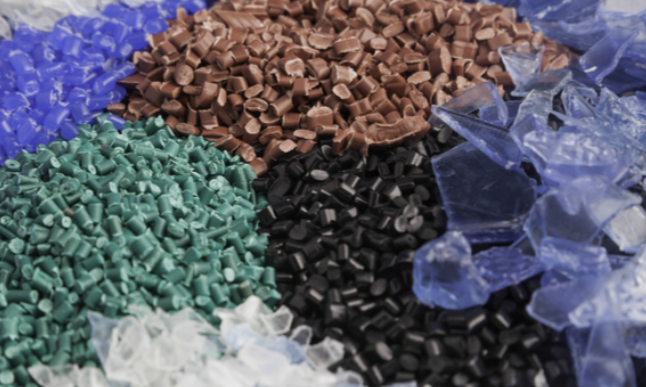Injection molding does generate waste, including excess plastic, defective parts, and byproducts from the manufacturing process.

Waste Generation in Injection Molding
Injection molding is a critical process in manufacturing where efficiency and precision are paramount. However, waste generation remains a significant issue, impacting both operational costs and environmental sustainability. The types of waste and the factors contributing to waste are multifaceted and require detailed scrutiny.
Types of Waste Produced
The injection molding process can produce several types of waste:
- Runners and Sprues: These are the channels through which molten plastic travels before entering the mold cavity. They solidify and are often discarded after molding.
- Defective Parts: Due to malfunctions or errors in the molding process, some parts may not meet quality standards and are thus considered waste.
- Overmolding Material: Excess material that seeps out of the mold can solidify and become waste.
- Unused Pellets: Plastic pellets not consumed in the process may be wasted due to spillage or contamination.
Factors Contributing to Waste
Several factors play a crucial role in the generation of waste in the injection molding process:
- Machine Calibration: Inaccurate machine settings can lead to overfilling or incomplete cavities, both of which contribute to waste.
- Mold Design: Poorly designed molds can cause defects in the final product, increasing the rate of discard.
- Operator Error: Manual errors in setting up the process can result in production of subpar parts that need to be discarded.
- Material Quality: Substandard material quality can lead to product defects and increased waste.
Environmental Impact of Injection Molding Waste
Injection molding, while efficient in mass-producing plastic parts, also contributes to environmental stress. The waste generated affects ecosystems and has a substantial carbon footprint, raising sustainability concerns within the industry.
Effects on Ecosystems
The waste from injection molding can severely impact ecosystems:
- Plastic Pollution: Discarded plastic parts and runners can enter waterways and natural habitats, posing threats to wildlife and marine organisms.
- Chemical Leaching: Chemicals added to plastics, such as plasticizers and stabilizers, can leach into the soil and groundwater, affecting local flora and fauna.
- Resource Depletion: The production of plastics often involves non-renewable resources, leading to their depletion and habitat destruction during extraction.
Carbon Footprint and Sustainability Concerns
The carbon footprint of injection molding waste includes several components:
- Energy Consumption: Injection molding machines require significant power, with larger machines consuming up to 58 kW per hour, contributing to greenhouse gas emissions.
- Transportation of Waste: The disposal and recycling of waste involve transportation, which adds to the carbon footprint, especially if the facilities are far from the manufacturing site.
- Non-Biodegradable Waste: Most plastics are not biodegradable, remaining in the environment for hundreds of years, with their decomposition releasing methane and other greenhouse gases.
Waste Management Strategies
In the realm of injection molding, adopting robust waste management strategies is essential to minimize environmental impact and optimize resource use. These strategies focus on recycling and reusing molded parts and introducing innovations to cut down on material waste.
Recycling and Reuse of Molded Parts
Recycling and reuse pathways offer a viable solution for managing waste:
- Grinding and Reprocessing: Facilities often grind defective parts and runners to reprocess them into new components, significantly reducing raw material demand.
- Design for Recycling: Manufacturers design parts with recycling in mind, ensuring that materials can be easily separated and reclaimed at the end of the product’s life.
- Energy Recovery: In cases where recycling is not feasible, converting waste to energy through incineration can be a practical way to recover energy from waste materials.
Innovations in Reducing Material Waste
Technological advancements are paving the way for more sustainable manufacturing:
- 3D Printing for Prototyping: By using 3D printing for prototyping, manufacturers can avoid the high costs and waste associated with traditional prototyping methods. This reduces material usage and allows for rapid iteration at a fraction of the cost.
- Biodegradable Materials: The industry is seeing a shift towards using biodegradable materials that offer a reduced environmental footprint without compromising the quality of the final product.
- Smart Manufacturing: Implementing smart manufacturing techniques with real-time monitoring can optimize production parameters, leading to less waste generation.
Case Studies: Waste Reduction in Injection Molding
Exploring case studies provides insight into effective waste reduction strategies in the injection molding industry. Successful stories highlight the potential for significant improvements in sustainability and efficiency.
Success Stories in the Industry
- Toyota’s Zero Waste Manufacturing: Toyota implemented a comprehensive waste reduction program, which includes recycling all plastic waste and using returnable containers for parts shipment. This initiative has achieved nearly zero landfill waste.
- Tech-Long’s Energy-efficient Machinery: Tech-Long developed injection molding machines that reduce energy consumption by 20-80% compared to traditional machines. This not only cuts down on power costs but also reduces the carbon footprint of the production process.
Analysis of Waste Management Approaches
Analyzing various approaches to waste management reveals key strategies:
- Closed-loop Recycling Systems: Some companies have adopted closed-loop systems, allowing them to recycle almost 100% of their scrap material back into the production cycle.
- Advanced Process Control: By using state-of-the-art process control systems, manufacturers can reduce defective parts and material overflow, which can lead to a waste reduction of up to 40%.
- Material Innovations: The introduction of new, more sustainable materials has helped reduce waste. For example, using bioplastics can reduce waste generation by allowing for better end-of-life disposal options.




